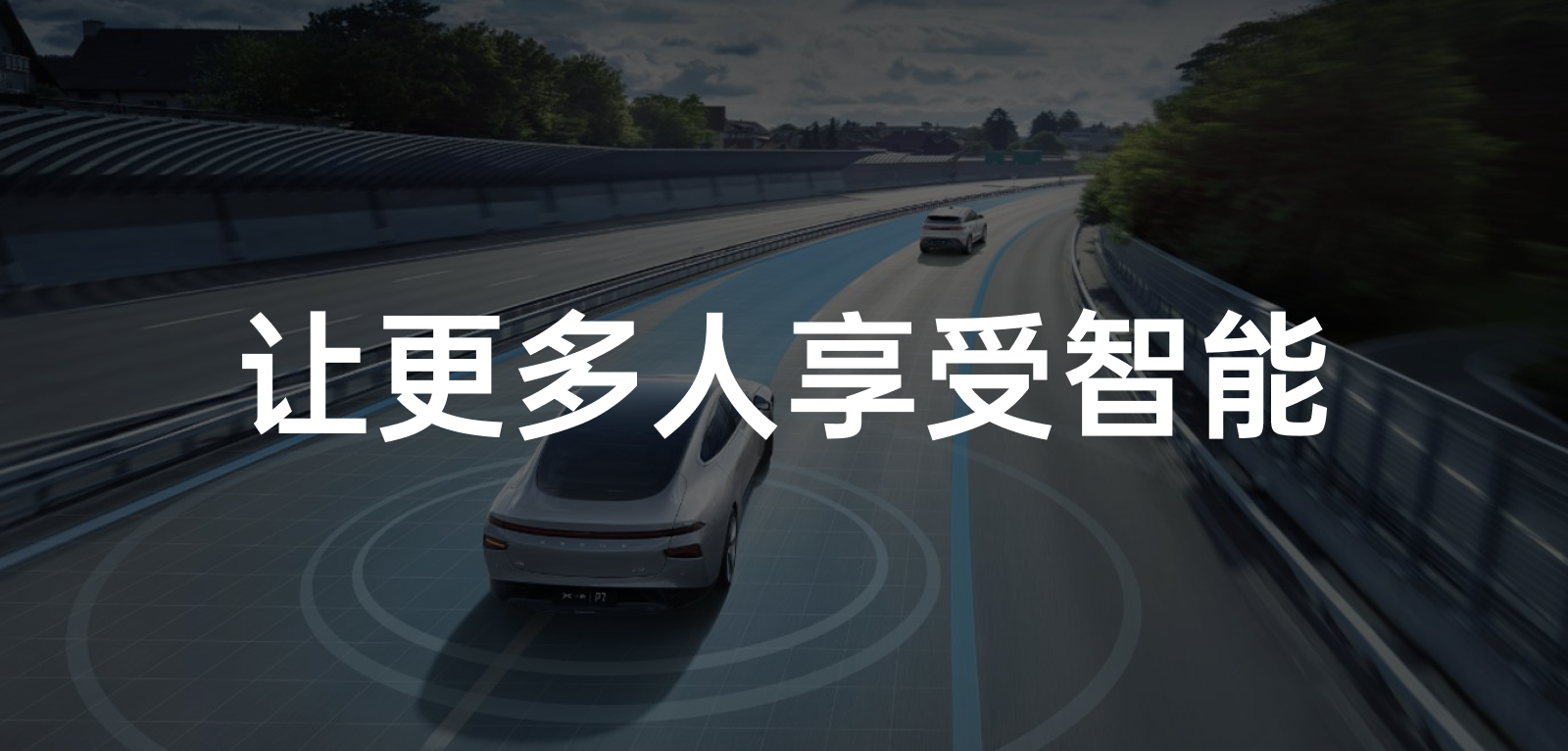Tonight, the most lively one in the three homes of Wei Xiaoli should be XPeng: Starting from May 9th, 2022, XPeng P5 and P7 models equipped with XPILOT 3.5/3.0 will be given the corresponding driving assistance and subsequent software updates as a gift for purchasing.
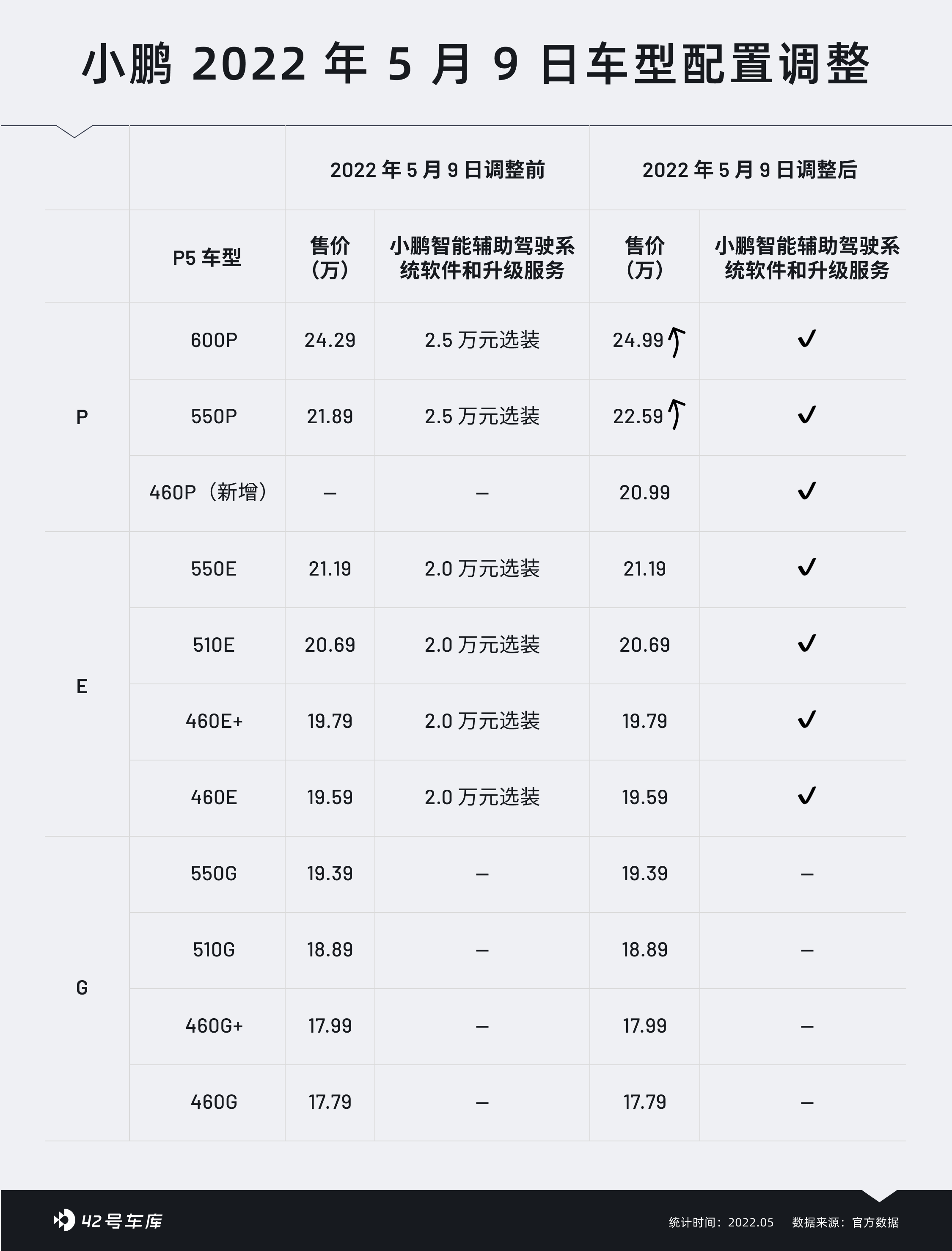
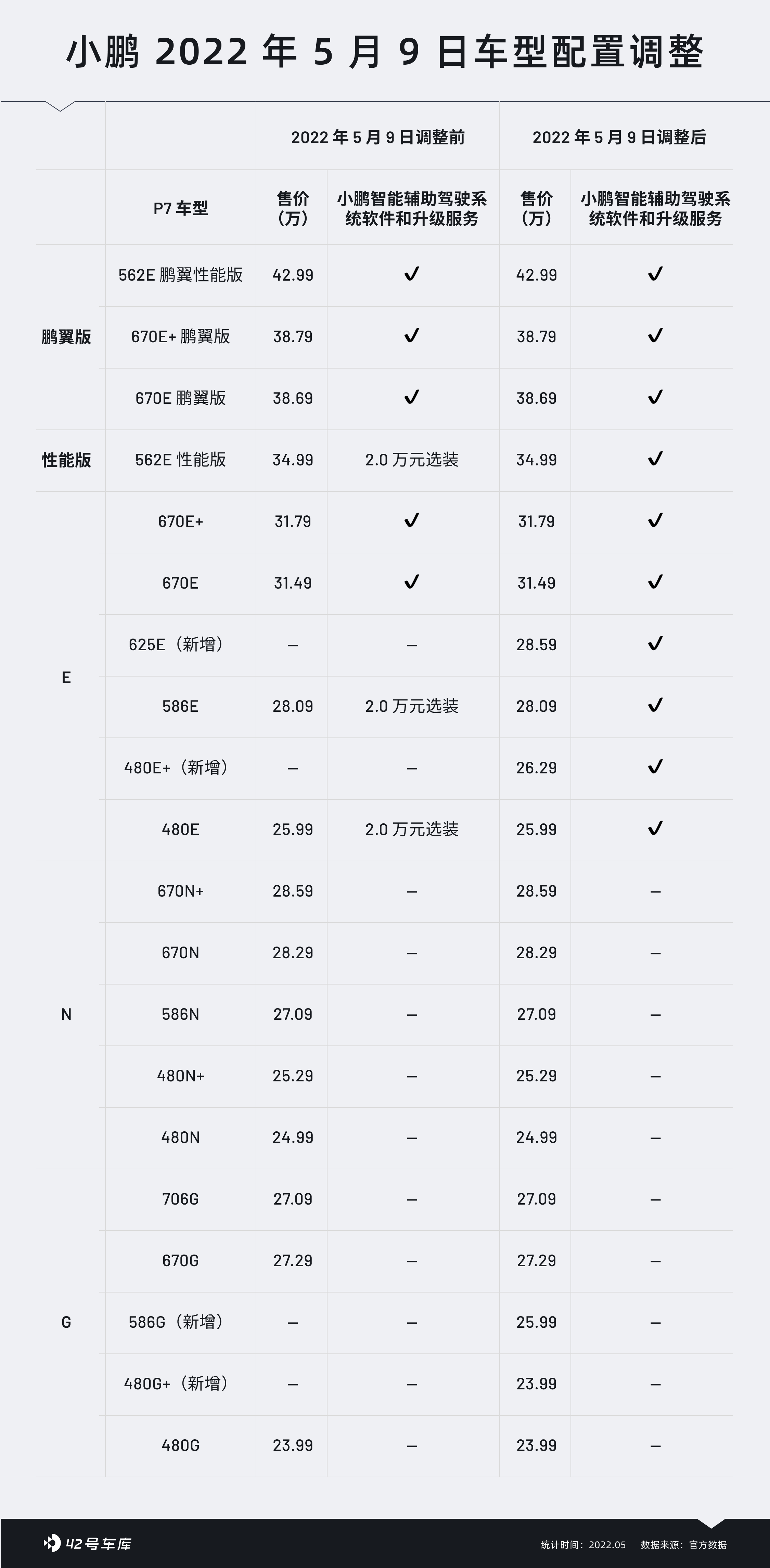
However, there are gains and losses. Also starting from May 9th, 2022, new users who purchase G3i, P5, and P7 will no longer enjoy the lifelong free charging service and free household charging stations and installation rights.
For potential users who are interested in XPeng’s intelligence, the adjustment that will take effect on May 9th is definitely good news: the driving assistance software no longer requires extra money, and the overall vehicle price remains unchanged (with a slight increase in P5 550P and 600P).
For now, let’s not dwell on the gains and losses between the lifelong free charging + free home charging stations and the full-featured driving assistance, and review what XPeng’s driving assistance software based on XPILOT 3.0 and 3.5 can do:
P7’s XPILOT 3.0 is based on the Xavier supercomputing platform, equipped with 5 high-precision millimeter-wave radars, 12 ultrasonic sensors, 4 panoramic cameras, 10 high-perception cameras, and a sub-meter-level high-precision positioning system. The P5, which supports XPILOT 3.5 hardware, has one less high-perception camera than the P7 and two additional lidar.
After enabling NGP, P5 and P7 support ACC full-speed automatic cruise, LCC lane centering, ALC intelligent lane change assistance, ATC adaptive curve cruising, as well as collision prevention in the forward, lateral, and backward directions, and parking lot memory parking and IHB intelligent high beam headlights included in the software upgrade service. Among them, P5 also supports cross-floor parking lot memory parking, full-speed domain adaptive cruise control with follow-up starting, and NGP intelligent navigation assistance in the city.
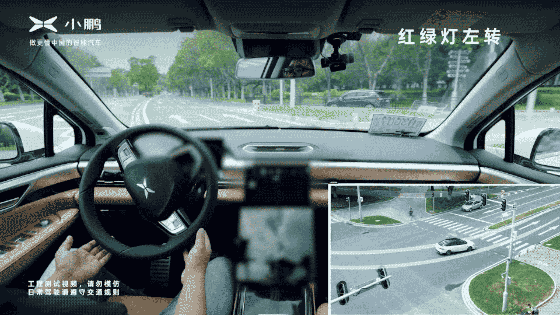 In short, the fully functional NGP included in P5 and P7 can help you remember parking spaces, change lanes while holding the steering wheel on highways, enter and exit ramps, and overtake slow vehicles. The P5 equipped with lidar can also stop and go in traffic jams, and in cities, it can automatically merge onto main roads, enter and exit ramps, and overtake slow vehicles like on highways.
In short, the fully functional NGP included in P5 and P7 can help you remember parking spaces, change lanes while holding the steering wheel on highways, enter and exit ramps, and overtake slow vehicles. The P5 equipped with lidar can also stop and go in traffic jams, and in cities, it can automatically merge onto main roads, enter and exit ramps, and overtake slow vehicles like on highways.
Apart from stimulating sales and converting some people who were hesitant about buying a car without full auxiliary driving capabilities into customers, the adjustments made by XPeng Motors in this round also need to take into account what XPeng promised in 2021.
Promises from XPeng in 2021
You don’t need to pay extra for software anymore. I immediately think of the Shanghai Auto Show on April 19, 2021. At that time, Huawei released a demonstration video of its city ADS autonomous driving technology – Huawei, with its powerful hardware and software integration capabilities, entered the market and was also a topic that was asked by all the heads of the new forces at the time. When asked this blunt question, XPeng Motors CEO He XPeng’s response was also “very focused”:
Currently, the Huawei ADS is only limited to a few cities, such as Shanghai, and can only be considered “semi-mass production”… XPeng has also tried the route Huawei is taking, but its applicability is very limited.
He XPeng summed up the core of XPeng’s auxiliary driving system as: the key to true mass production lies in data.
I think that in addition to giving away auxiliary driving features to boost sales, XPeng Motors has many other methods it can choose, such as even lowering the prices of some models first in the context of generally rising prices (of course, it is unclear how much of an impact this will have), but just taking a stance of going against the trend of price increases can already generate a lot of hype.
But XPeng didn’t do that.
Returning to He XPeng’s statement in 2021, the NGP included with each P5 and P7 is what XPeng believes is the foundation of its existence, possibly the most critical piece of the puzzle to fully showcasing the vehicles’ capabilities. In addition to considering sales data, I think that making auxiliary driving available to more people also has a close relationship with “data”.
Tesla’s perception hardware based purely on computer vision technology may barely suffice for other automakers–it only consists of eight cameras that can record 1,280 x 960, 12-bit depth RAW format images at 36 frames per second. However, the data collected from the millions of Tesla vehicles that drive day and night around the world is what makes other automakers envious, and cannot be shifted by the advance of perception hardware technology alone.
At the Q4 2021 earnings conference call, XPeng made two promises:
-
Complete the development of urban NGP technology in Q2 2022, and gradually expand the list of supported cities with NGP after obtaining relevant high-precision map approvals;
-
Launch XPILOT 4.0 with significant technological improvements in 2023, achieving full-scenario intelligent auxiliary driving in both highways and cities.Wishing XPeng (Xpeng) success in achieving its goals, and enabling more people to experience the beauty of intelligent cars in 2022.
Final Words
I feel that the product lines of G3, P5, and P7 are a bit like Apple’s iPhone and iOS:
-
The G3 is like the iPhone SE, which serves as a ticket for everyone to experience the XPeng smart car.
-
The P5 is like the standard numerical series of the iPhone, suitable for the vast majority of people, and it even excels in some aspects (such as the P5’s LiDAR, which is like the battery life of the iPhone 13 being stronger than that of the 13Pro).
-
The P7 is like the iPhone Pro Max – the apple of XPeng’s eye: elegant and slender proportions, flexible and flowing curves.
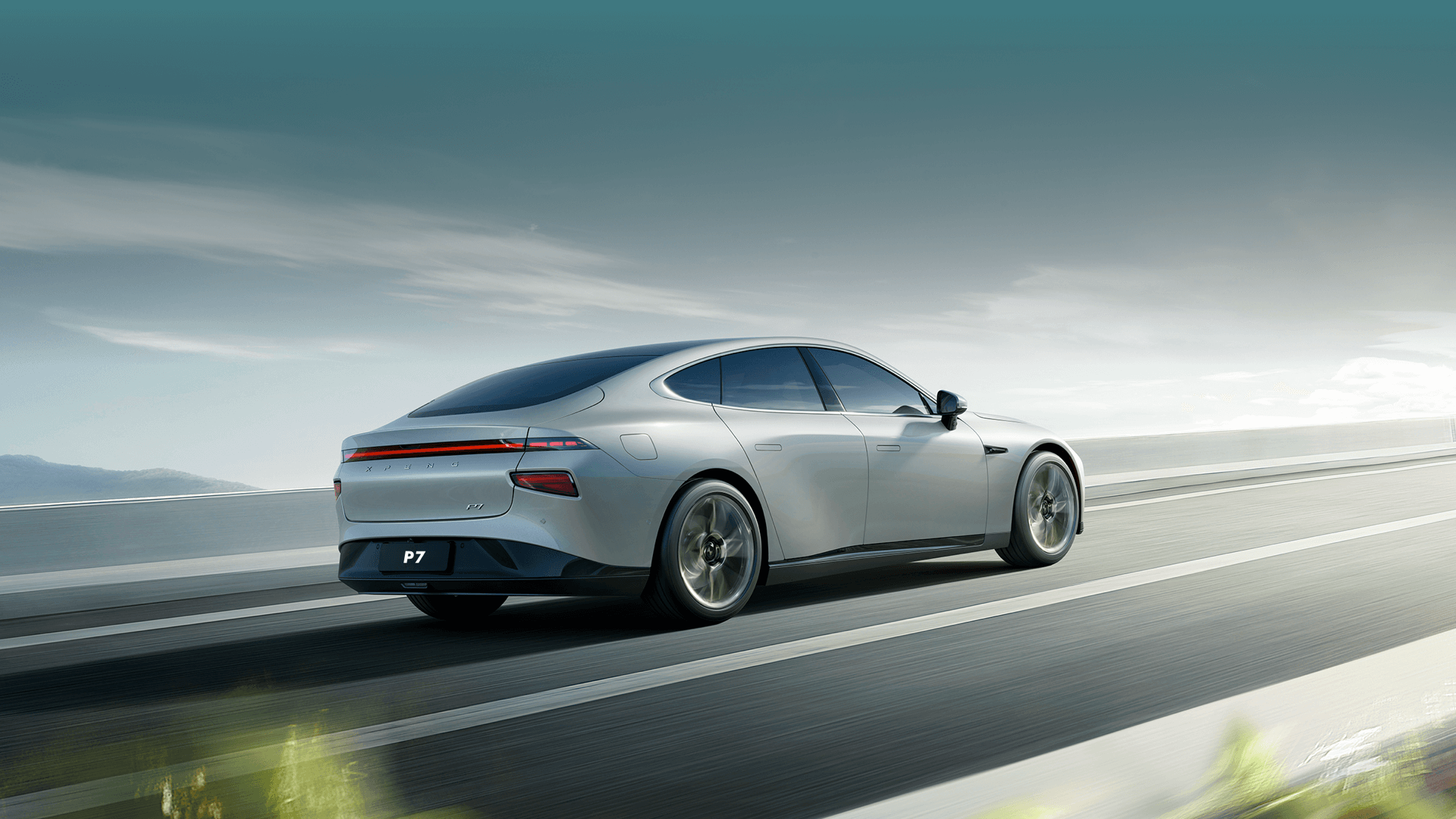
If iOS is the hero of the Apple ecosystem, then XPILOT is the core of XPeng: it is XPeng’s true nature that sets it apart from other automakers. This corresponds to a statement made by He XPeng during his interview with CCTV in 2021:
I hope that when people mention XPeng, they can recognize that this is a company that maintains exploration and adheres to sustainable paths.
From my personal perspective, XPeng’s adjustment in this round can be said to be “smoothing over a mosquito bite on the heart and lips”: for a period of time, I was obsessed with watching various first-person driving videos of new energy cars (actually, I still am), and I had clicked on XPeng’s app countless times to begin configuring the P7. Regardless of whether the interior was simple and elegant in beige or sporty black or whether the paint was glossy white or vibrant red, XPILOT 3.0 remained unchanged in the configuration form, like an anchor, until the final step began to regret:
How did it cross the national subsidy line?
This article is a translation by ChatGPT of a Chinese report from 42HOW. If you have any questions about it, please email bd@42how.com.
